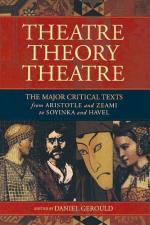|
This section contains 4,059 words (approx. 14 pages at 300 words per page) |

|
SOURCE: Thornhill III, Arthur H. “The Goddess Emerges: Shinto Paradigms in the Aesthetics of Zeami and Zenchiku.” Journal of the Association of Teachers of Japanese 24, no. 1 (April 1990): 49-59.
In the essay below, Thornhill exposes elements of Shinto doctrines in the treatment of the sun goddess myth in works by Zeami and his successor Komparu Zenchiku.
In recent years, scholars of Japanese literature have made ambitious attempts to redefine the medieval period. Sensing the conventional periodization, which classifies the Kamakura and Muromachi eras as medieval, to be ultimately based on events of political rather than cultural history, they propose new divisions. For example, Konishi Jin'ichi defines chûsei as the period when Chinese culture was truly assimilated and thus transformed the earlier “ancient” cultural patterns.1 Accordingly, he sets the beginning of chûsei at the early 10th century, and its demise at the rise of Western influence in the...
|
This section contains 4,059 words (approx. 14 pages at 300 words per page) |

|


